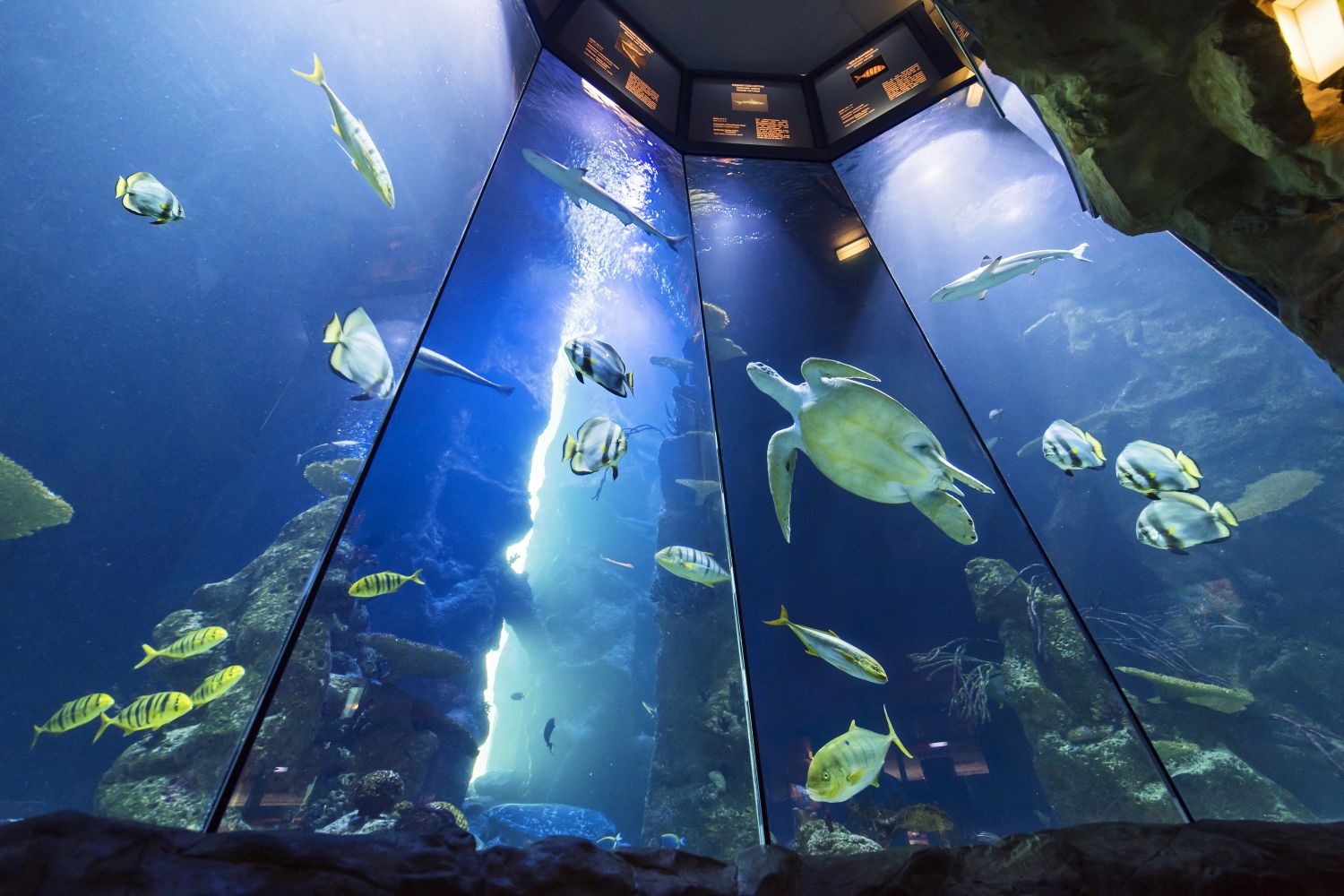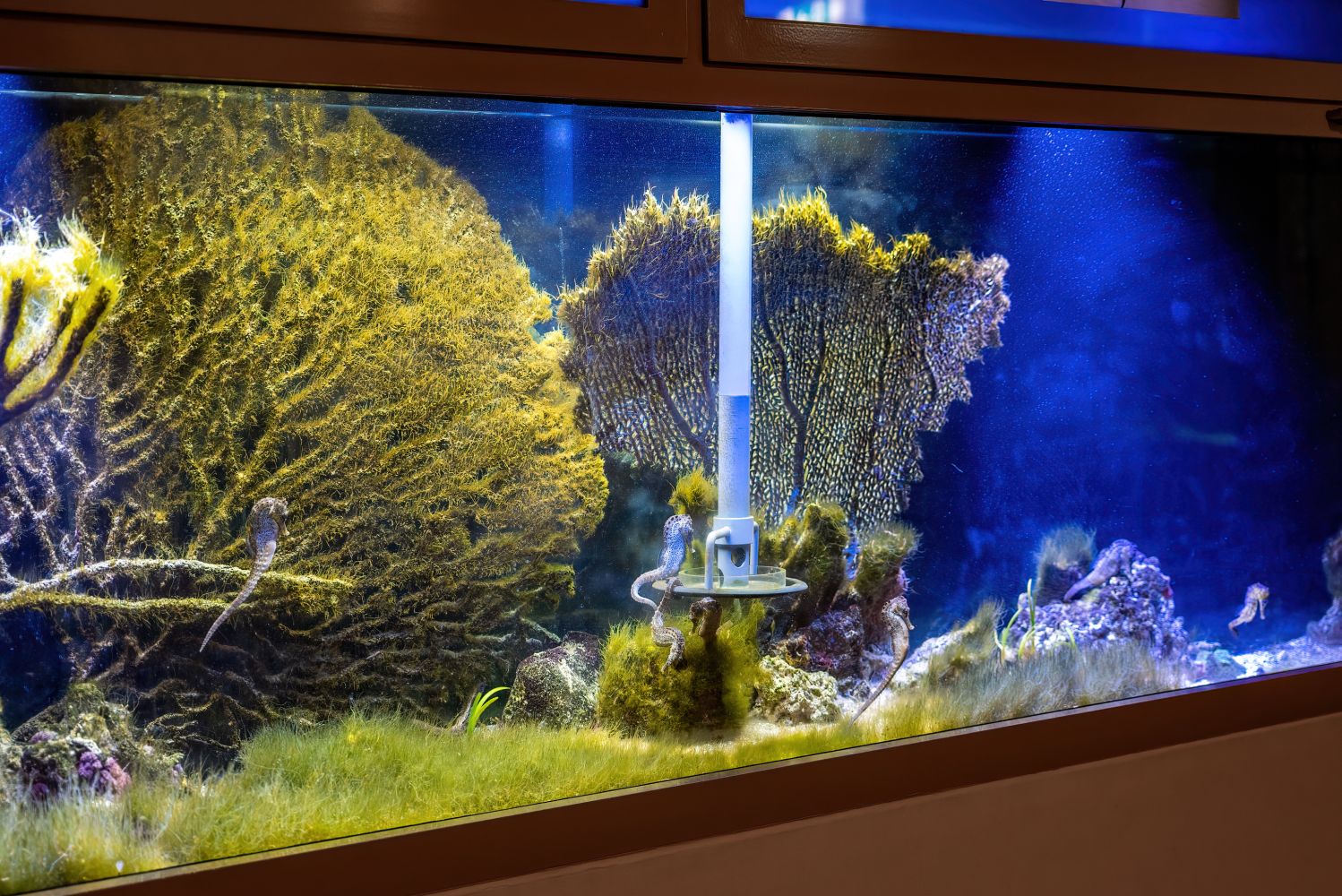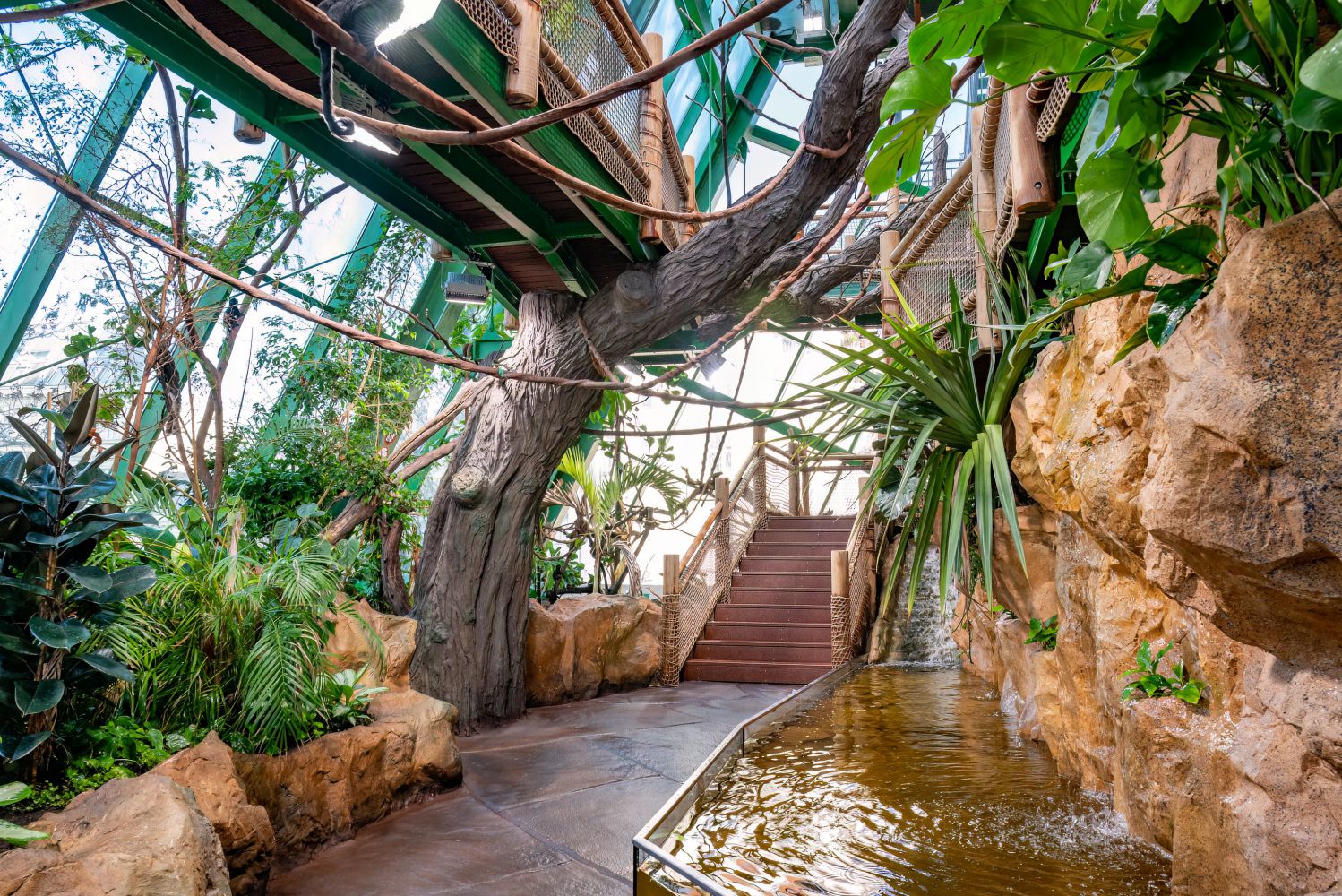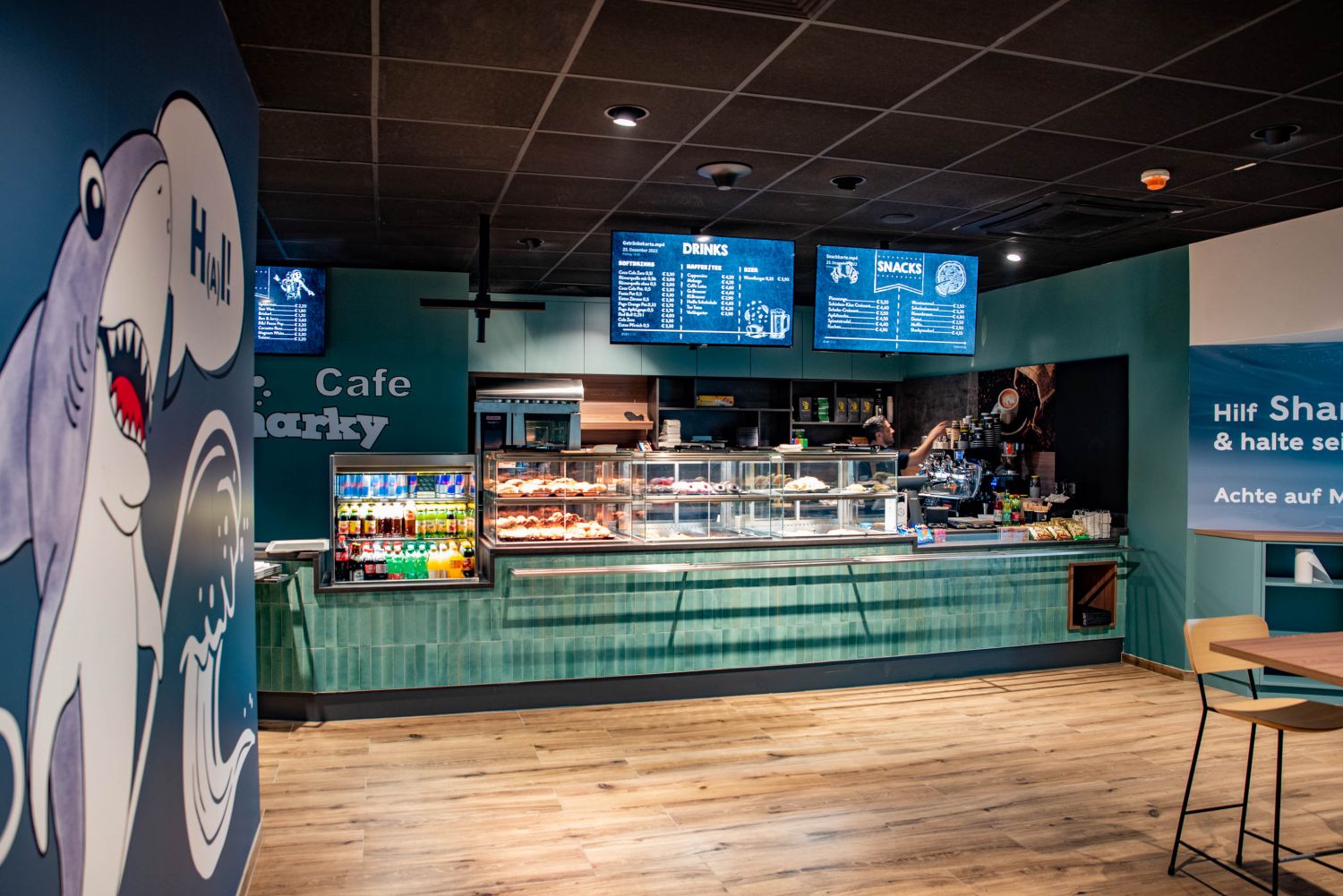Floor 4
On the 4th floor you can expect great underwater views, seahorses and a chance to take a little break.
The impressive backdrop of the large aquarium immediately draws everyone’s attention: The aquarium with Puppi the seaturtle extends over levels 4 and 5 with a volume of 300,000 liters! Opened in 2007, the tank is dedicated to the Austrian diving pioneers Prof. Dr. Hans Hass and his wife Lotte in recognition of their lifework. The name comes from the green sea turtle Puppi, who has lived in the Haus des Meeres since 1982 and is therefore our oldest resident! Puppi is a “foundling” who once was a 10 cm hatchling that was bought by a lady from a fish market in Asia to save the little turtle from its dire fate. Back in Austria, Puppi’s demands and Puppi herself grew, so “home care“ was no longer sufficient and the owner turned to the Haus des Meeres. From then on, the sea turtle became an inhabitant of our zoo has been the driving force behind renovations and extensions ever since. You can find the detailed backstory of Puppi here.
Sea turtles can live up to 70–80 years and do not reach sexual maturity until their second decade. From then on, they reproduce every 3 to 5 years and lay several hundred eggs each time. This appears to be a very high number of offspring, but under natural conditions only one animal from a clutch attains sexual maturity. Most young animals already die on the way to the sea. Crabs and seabirds are already waiting on the beach to prey on fresh hatchlings. Any hatchling that reaches the sea must then contend with other predators there. Despite everything, this reproductive strategy has ensured the survival of turtles for millions of years. Only since we humans began hunting sea turtles for food or have occupied their nesting beaches as tourists do, have they been on the list of endangered species.
What other animals are swimming in the large tank? Blacktip reef sharks, bamboo sharks, paddlefish, giant groupers, batfish, clown triggerfish, pilot mackerel, as well as net moray eels and green moray eels and many more: Let the atmosphere of the tank and its diverse inhabitants work their magic on you!
Let’s move on to our seahorse pool: Seahorses are the pride and joy of the Haus des Meeres! The Caribbean long-snout seahorse propagation program was launched fifteen years ago under the direction of Dr. Daniel Abed-Navandi. Since then, the Haus des Meeres has been regarded as a European pioneer in seahorse breeding. These fish are threatened in their natural habitat. Harbour construction, agricultural use of fertilizers and pesticides, but also fishing with bottom trawls and aquaculture facilities have all contributed to destroying the seahorse ecosystems.
Seahorses are not only very interesting aquarium inhabitants because of their shape, which is unusual for fish – they also have a type of reproduction that is uncommon for fish: the female lays the eggs in a brood pouch in the male's stomach and the father takes over all further brood care. It swims around for several weeks with a big belly in which the fish embryos are fed by a real placenta. And then at birth, hundreds of young are expelled into the water with noticeable contractions.
The tropical area can also be accessed from the 4th level. Originally built in 2000 as the first “outdoor area“, the jungle facility housed various turtle, bird and fish species as well as free-roaming monkeys until 2022 and has developed into a real magnet for visitors. This area is now temporarily closed for renovation, in the meantime the animals can be seen in the Krokipark.
Our Café Sharky is located directly opposite Puppi’s pool and offers a magnificent view of the park and the city – a wonderful place to take a little break. Cool drinks, various coffee specialties, pastries, ice cream and a selection of small dishes and snacks (self-service) await you. The entire restaurant – like the entire zoo – is a non-smoking area. The smoking area can be found on the outside staircase.



